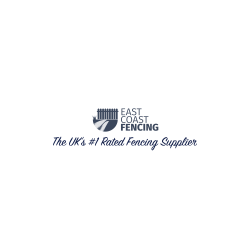What to Consider When Selecting a New Wooden Fence: A Guide for Homeowners and DIY Enthusiasts

Choosing the right wooden fence for your garden is not just about enhancing the aesthetics of your home; it's about providing privacy, ensuring security, and contributing to the overall appeal of your outdoor living space. With numerous options available in the market, the decision-making process can be overwhelming. Here at East Coast Fencing, we understand the importance of finding the perfect wooden fence that meets all your requirements. This comprehensive guide is designed to help homeowners and DIY enthusiasts make an informed choice when selecting a new wooden fence.
1. Understand the Purpose of Your Fence
Before diving into the different types of wooden fences, it's crucial to identify the primary purpose of installing one. Are you looking for more privacy, or is it purely for decorative purposes? Do you need a sturdy fence for security reasons, or are you trying to keep pets within your property? Knowing the purpose will significantly narrow down your options and lead you to a fence that suits your needs.
2. Consider the Different Types of Wood
Wooden fences can be made from a variety of wood types, each offering its own set of benefits:
- Pine: Affordable and readily available, pine is a popular choice for many homeowners. However, it requires regular maintenance to prevent decay and insect infestation.
- Cedar: Cedar is known for its beautiful colour and natural resistance to rot and pests, making it a more durable option compared to pine. It's slightly more expensive but requires less maintenance over the years.
- Redwood: Highly durable and naturally resistant to rot, redwood is a premium choice for wooden fences. Its rich colour and texture make it an attractive option, though it comes at a higher cost.
3. Pick the Right Style
The style of your wooden fence should complement the architecture of your home and the layout of your garden. Here are a few popular styles to consider:
- Picket Fence: Ideal for front yards, picket fences are primarily decorative but also provide a clear boundary.
- Privacy Fence: Featuring tall panels placed close together, privacy fences offer the best solution for those looking to create a secluded outdoor space.
- Split Rail Fence: Perfect for larger properties or rural homes, split rail fences define boundaries without obstructing views.
4. Factor in Maintenance and Durability
Maintenance is a critical aspect to consider when choosing a wooden fence. Some woods require more care than others to maintain their appearance and durability. Consider how much time and effort you're willing to dedicate to fence maintenance. Additionally, think about the long-term durability of the wood and whether it can withstand your local climate.
5. Understand Local Regulations and Neighbour Considerations
Before making a final decision, it's essential to check local building codes and homeowners association regulations regarding fence size, style, and materials. Also, consider discussing your fencing plans with neighbours, especially if the fence will be installed along property lines.
6. Budget Considerations
Your budget will play a significant role in the type of wooden fence you select. While it's tempting to opt for the cheapest option, consider the long-term costs associated with maintenance and potential replacements. Investing a bit more upfront for a durable and low-maintenance material can save you money in the long run.
At East Coast Fencing, we take pride in supplying quality wooden fence panels that cater to a wide range of needs and preferences. Our team is dedicated to providing expert advice and support throughout your decision-making process, ensuring you select the best wooden fence for your home. Visit our website or contact us to explore our extensive range of products and find the perfect fencing solution for your outdoor space.














Leave a Comment